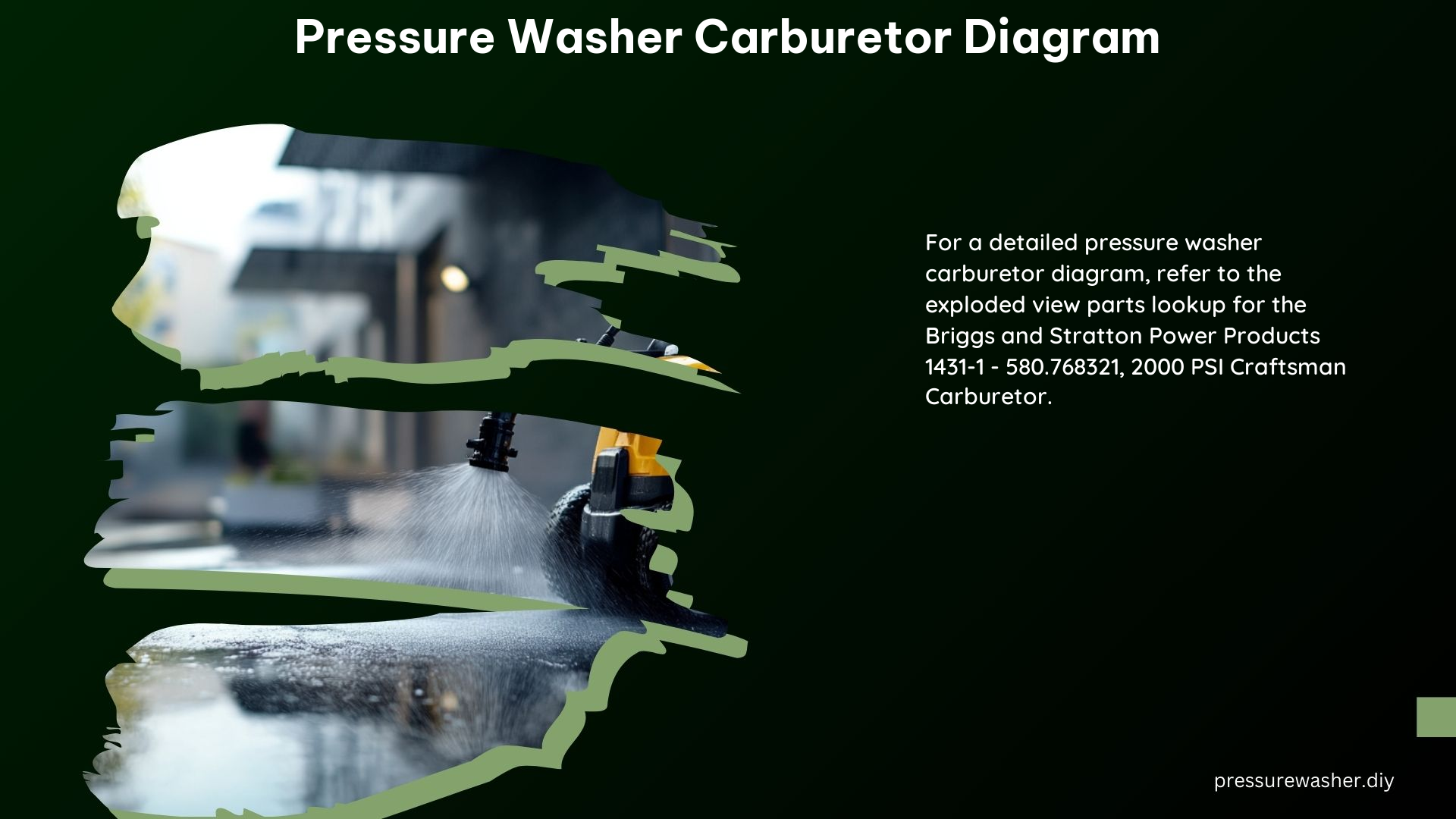A pressure washer’s carburetor is a critical component that ensures the proper air-fuel mixture for efficient engine operation. Understanding the intricacies of a pressure washer carburetor diagram can help you maintain your equipment and troubleshoot common issues effectively.
Identifying Key Components for Air Leak Detection
-
Gaskets and Seals: Ensure all gaskets and seals, such as the one between the carburetor and the engine block, as well as the seals around the fuel inlet and outlet, are in good condition and properly seated. Damaged or improperly installed gaskets and seals can lead to air leaks, causing the engine to run lean and potentially leading to performance issues or even engine damage.
-
Fuel Inlet and Outlet: Inspect the fuel inlet and outlet for any blockages or cracks that could cause air leaks. Make sure the fuel lines are securely connected to the carburetor and the fuel tank, as loose connections can introduce air into the system.
-
Carburetor Bowl Gasket: Check the gasket between the carburetor bowl and the carburetor body for any signs of wear or damage. This gasket is responsible for sealing the carburetor bowl, and a faulty gasket can result in air leaks.
-
Idle Mixture Screws: Ensure the idle mixture screws are properly adjusted and not loose, as this can also cause air leaks. Proper adjustment of the idle mixture screws is crucial for maintaining the correct air-fuel ratio at low engine speeds.
-
Choke and Throttle Shafts: Verify that the choke and throttle shafts are properly aligned and not damaged, as misalignment can lead to air leaks around these components.
Cleaning and Adjusting the Carburetor

-
Disassemble the Carburetor: Remove the carburetor from the engine and disassemble it to access the internal components. This will allow you to thoroughly clean and inspect the carburetor.
-
Clean the Carburetor: Use a high-quality carburetor cleaner and a soft brush to clean the internal jets and passages. Be extremely careful not to damage any of the small components during the cleaning process.
-
Reassemble the Carburetor: Once the cleaning is complete, reassemble the carburetor in the reverse order of disassembly, ensuring all parts are properly aligned and secured.
-
Adjust the Idle Mixture: Use a screwdriver to adjust the idle mixture screws. Turn them clockwise to richen the mixture and counterclockwise to lean it out. The ideal setting will depend on the specific engine and carburetor model, so refer to the manufacturer’s recommendations or use a trial-and-error approach to find the optimal setting.
Troubleshooting Common Issues
-
Clogged Jets: Inspect the carburetor jets for any blockages or debris that could restrict fuel flow. Clean or replace the jets as necessary to ensure proper fuel delivery.
-
Incorrect Idle Mixture: If the engine is surging or hunting, adjust the idle mixture screws to achieve the correct air-fuel ratio. This will help stabilize the engine’s idle performance.
-
Faulty Choke or Throttle: Inspect the choke and throttle components for any signs of damage or malfunction. Replace these parts if they are found to be the root cause of the issue.
-
Air Leaks: Carefully inspect the entire carburetor and fuel system for any potential air leaks. Seal any leaks found to prevent the engine from running lean.
Technical Specifications
When working on a pressure washer carburetor, it’s essential to have the following technical specifications:
- Carburetor Model: Identify the specific model of the carburetor, such as the Briggs and Stratton Power Products 1431-1 – 580.768321.
- Engine Horsepower: Determine the horsepower rating of the engine, such as 6.25 HP for a Tecumseh engine.
- Fuel Type: Specify the type of fuel used, such as gasoline.
- Carburetor Settings: Provide detailed settings for the idle mixture screws, main jet, and other adjustable components, as recommended by the manufacturer.
By understanding the pressure washer carburetor diagram and following the proper maintenance and troubleshooting procedures, you can ensure your pressure washer operates at peak performance and avoid costly repairs down the line.
References:
1. https://www.jackssmallengines.com/jacks-parts-lookup/manufacturer/generac/united-states/pressure-washers/2-000-psi/1431-1-580-768321-2-000-psi-craftsman/carburetor
2. https://www.justanswer.com/small-engine/cek09-older-model-pressure-washer-6-25-hp-tecumseh.html
3. https://www.youtube.com/watch?v=F9ytZKrDIps
4. https://www.youtube.com/watch?v=cxeqenBHSeo
5. https://www.reddit.com/r/smallengines/comments/13zu41x/pressure_washer_carb_issue_and_possible_solitution/
